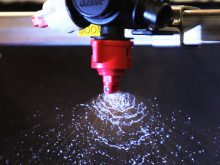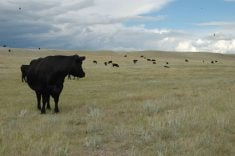MANTARIO, Sask. – In the late 1970s the farmers of Mantario could have been excused if they looked up from their fields and thought the First World War had broken out all over again.
Their neighbour, a bachelor farmer in his mid-40s, had just spent the last two winters building a replica British First World War fighter plane called the SE5A, complete with a wooden machine gun model at the front.
“It was enjoyable to build and I guess that’s what really got me going building airplanes,” said Don Francis, who retired from farming 10 years ago.
Read Also

Soybean market still figuring out implications of China-U.S. pact
Soybean futures had a muted reaction to the U.S. trade deal with China as the market tries to figure out the nuances of the deal.
The biplane was the beginning of a long journey into aviation construction. He’s no Howard Hughes and his farm shop is no Boeing factory, but for the past 30 years Francis has been working to put Mantario on the map as Saskatchewan’s aviation capital.
Since he built that first open cockpit biplane in the mid-1970s, six other planes have rolled out of his shop and he is now working on a seventh. These aren’t model airplanes. They’re the real deal, and his dedication to building them began simply enough, with a desire to fly.
In the early 1970s he was farming in the summer and building cabinets and houses in the winter. A house project finished early and he needed something to do, so he decided to make an old dream come true and get his pilot’s licence.
Even before officially graduating from flight school, he had carved out a runway on the edge of his farmyard, built a one-plane hanger and bought a Piper Clipper.
While one itch had been scratched, another remained: to build his own aircraft. A few years after bringing the Clipper home, he bought plans for the biplane and went to work. It took him two winters before the replica was ready for the open skies.
Although it was fun, the plane’s open cockpit limited the kind of weather he could fly in and the distances he could travel. Francis wanted to build a plane that could replace his Clipper, which was largely motivated by a desire to avoid red tape.
The rules said that while a factory-built plane had to be inspected and certified once a year, a home-built aircraft did not.
“I guess they figured if you can build it, you can maintain it.”
He chose a replica Piper Cub, which had been the standard airplane of the 1940s. He started working on it in 1980 and had it airworthy by 1985. He promptly sold his Clipper.
His next plane was an Emeraude, a low-wing mono plane made of wood. He sold the fighter replica and started work in 1991 on a Van’s RV-6, part of a line of home-built aircraft designed by an airplane builder from Oregon. He followed that up by helping a friend build another Van’s plane and then building his own Marquart Charger biplane.
His next project was a Van’s RV-8, which had actually been started by another friend.
“But things in his life changed and he ended up down in Panama so he didn’t help me too much.”
The RV-8 flew for the first time last year.
He now has four planes to find room for, the RV-6, RV-8, Marquart Charger and Piper Cub replica, forcing him to build a second hanger that can hold two planes.
“When I built that first airplane I thought that would be the only plane I ever owned so why would I ever have to get any bigger?”
As it is, he’s been forced to store his Piper with a friend in Unity, Sask.
“One of these days I guess I’ll switch airplanes again.”
His latest project is a partially built Starduster Two open cockpit biplane that his friend from Panama found.
“I guess I’m doing it for something to do and he wants the airplane.”
At 72, Francis is pretty sure this will be his last project.
“I’ve said a lot of times this is the last time, but I’m quite sure this is the last one.”
While Francis’s aviation construction drew heavily on his carpentry skills, he said building airplanes is a lot different from building a house. It is meticulous and often mechanical work that involves smaller parts. He received help from books, other builders and a magazine published by the Experimental Aircraft Association.
While Francis knew his way around a welding torch, metal aircraft forced him to hone those skills.
“I had to learn to be better at it, you might say.”
Francis still flies, logging 60 to 70 hours a year, but he now goes up only in the summer.
“I don’t know, I guess I just don’t care to go out in the cold.”
While some may see it as a unique hobby, Francis said it’s no different than restoring and collecting antique tractors, although he admitted his hobby has its advantages.
“Flying lends itself to keeping in contact with each other because you can fly back and forth, while with tractors, of course you’re not going to do that.”














